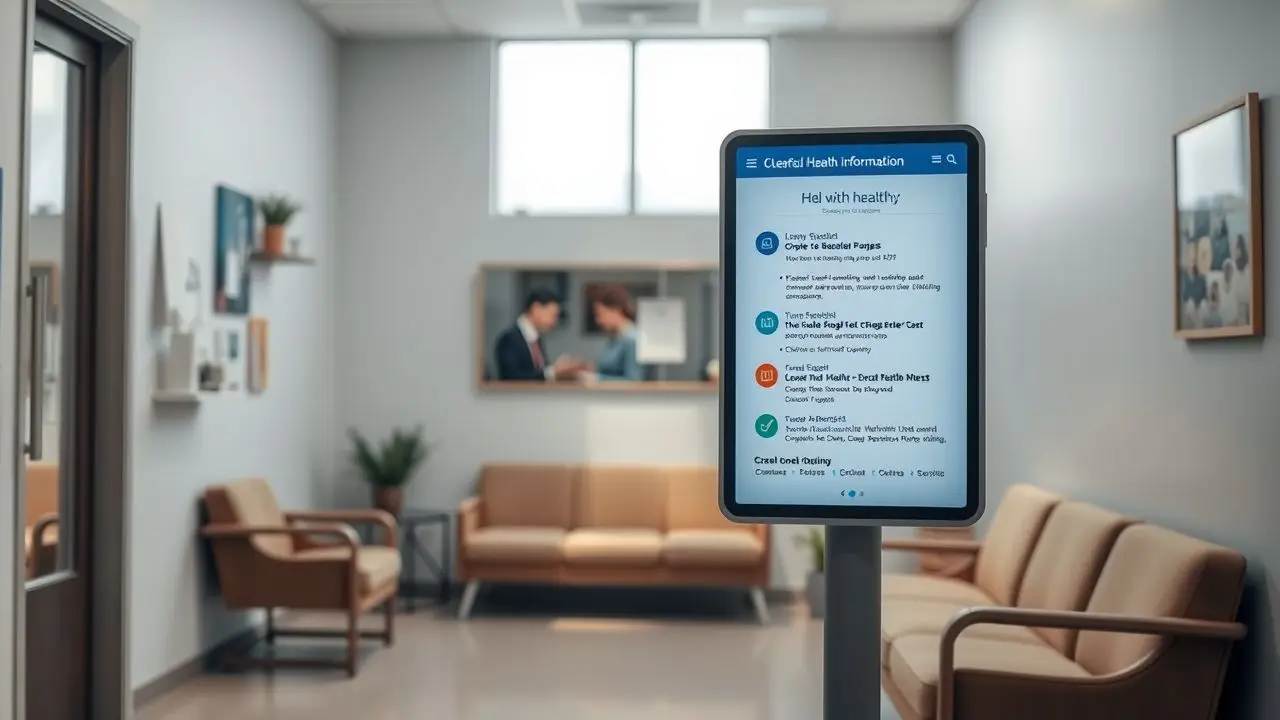Waiting in medical offices can make people feel worried. Digital signs help by giving out information in an easy way. This blog talks about how these signs can make waiting less stressful and more useful for patients.
Keep reading to learn more.
Key Takeaways
- Digital signs in medical offices provide real-time updates and engaging content. This helps patients feel less stressed about waiting times.
- Signs offer helpful health tips, educational information, and can display messages in multiple languages. This makes everyone feel more comfortable and informed.
- Choosing the right place for digital signs and offering multi-lingual support improves patient experience. Training staff on how to use these systems is key for success.
- Implementing a good content strategy with clear information reduces wait-time anxiety. It also makes the waiting room a better place for patients.
- Measuring success with feedback helps find ways to improve digital signage. Tackling challenges like technology issues or language barriers is important.
The Benefits of Medical Office Digital Signage

Digital signs in medical offices keep patients informed and engaged. They help reduce stress by providing useful information during wait times.
Decreased boredom
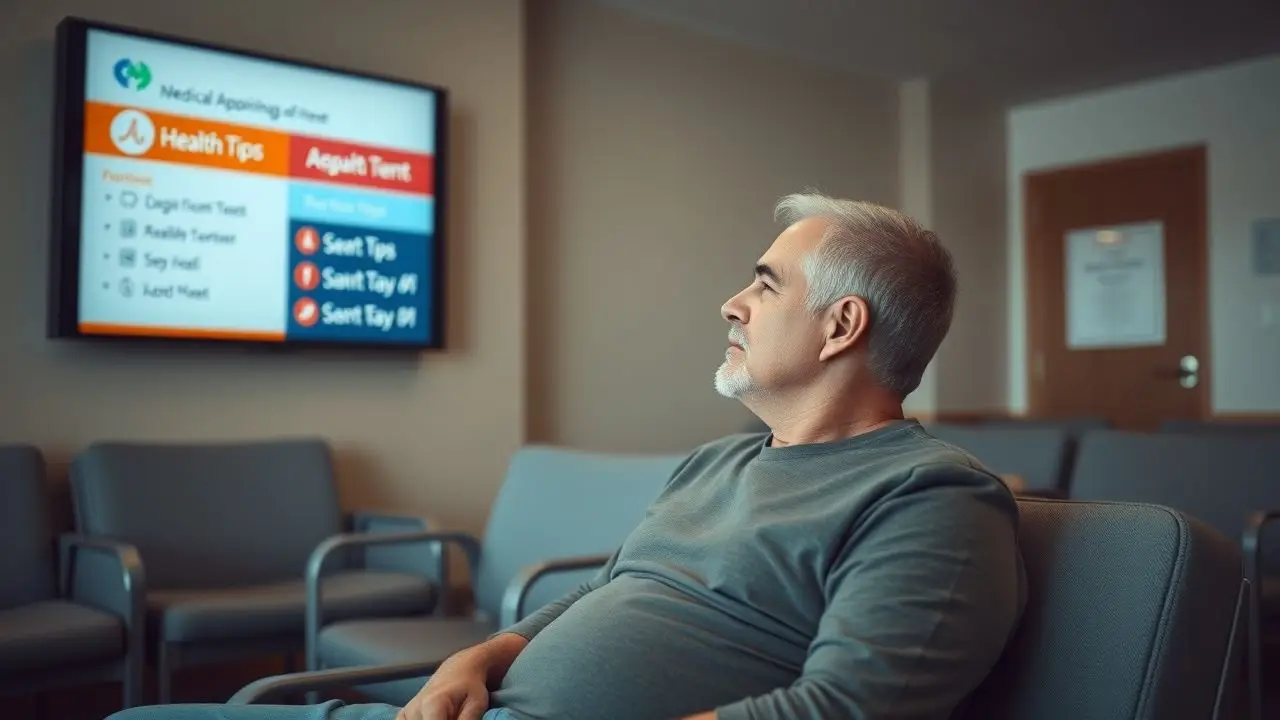
Medical offices often have long wait times. This can lead to boredom for patients in the waiting room. Digital signs help ease this issue. They provide engaging content that captures attention.
Patients can read health tips or watch short videos while they wait.
First-hand experience shows that digital signage makes waiting more bearable. Screens display helpful information about appointment status and healthcare topics. This not only keeps patients entertained but also educates them.
In turn, decreased boredom helps reduce overall patient anxiety and stress in medical facilities.
Reduced stress and anxiety

Digital signs can help cut down stress and anxiety in medical offices. Patients often feel nervous while waiting for their appointments. Screens that show helpful information can ease these feelings.
Seeing what to expect next makes patients feel more informed and less worried.
Healthcare digital signage also shares educational content. This content covers health tips, upcoming services, or wellness advice. Such messages keep patients engaged during their wait.
By providing clear and real-time information through displays, offices can improve the patient experience greatly.
Educational and meaningful content
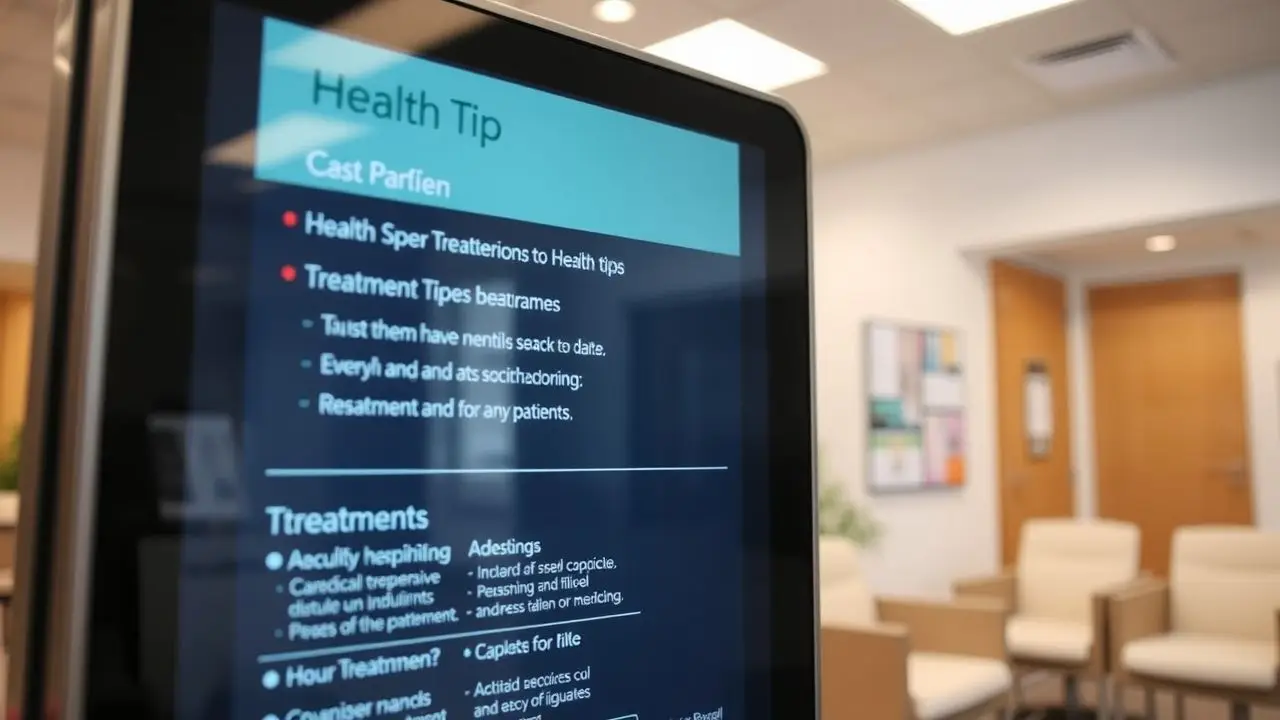
Educational content on digital signs helps patients feel informed. These displays show health tips, treatment options, and wellness advice. Patients can learn while they wait. This makes the time go faster.
Meaningful information reduces anxiety in medical offices. It gives patients a sense of control over their health choices. Clear messages support better patient education. Engaging content also reflects the values of the facility and boosts patient trust in care.
Matching facility values and standards
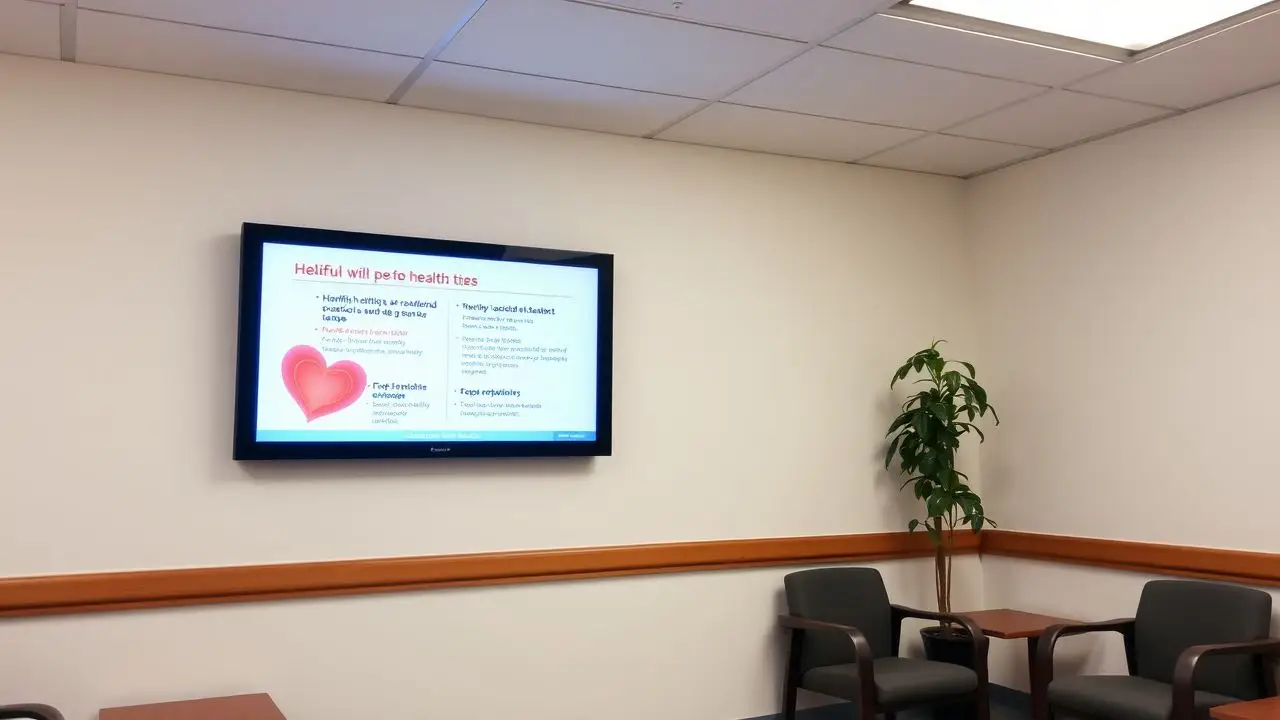
Digital signs reflect the values and standards of a medical office. They show patients that the facility cares about their experience. Signs can display timely information that matches what the office believes in, such as patient education and quality care.
Patients notice when a place aligns with its messages. This connection helps to lower stress levels for those waiting.
Using electronic signs helps create a welcoming atmosphere. Information displays can share health tips or updates on wait times. By doing this, facilities support their values while keeping patients engaged.
Signage solutions play an important role in enhancing the overall patient experience in healthcare settings.
Improving Patient Experience with Digital Signage
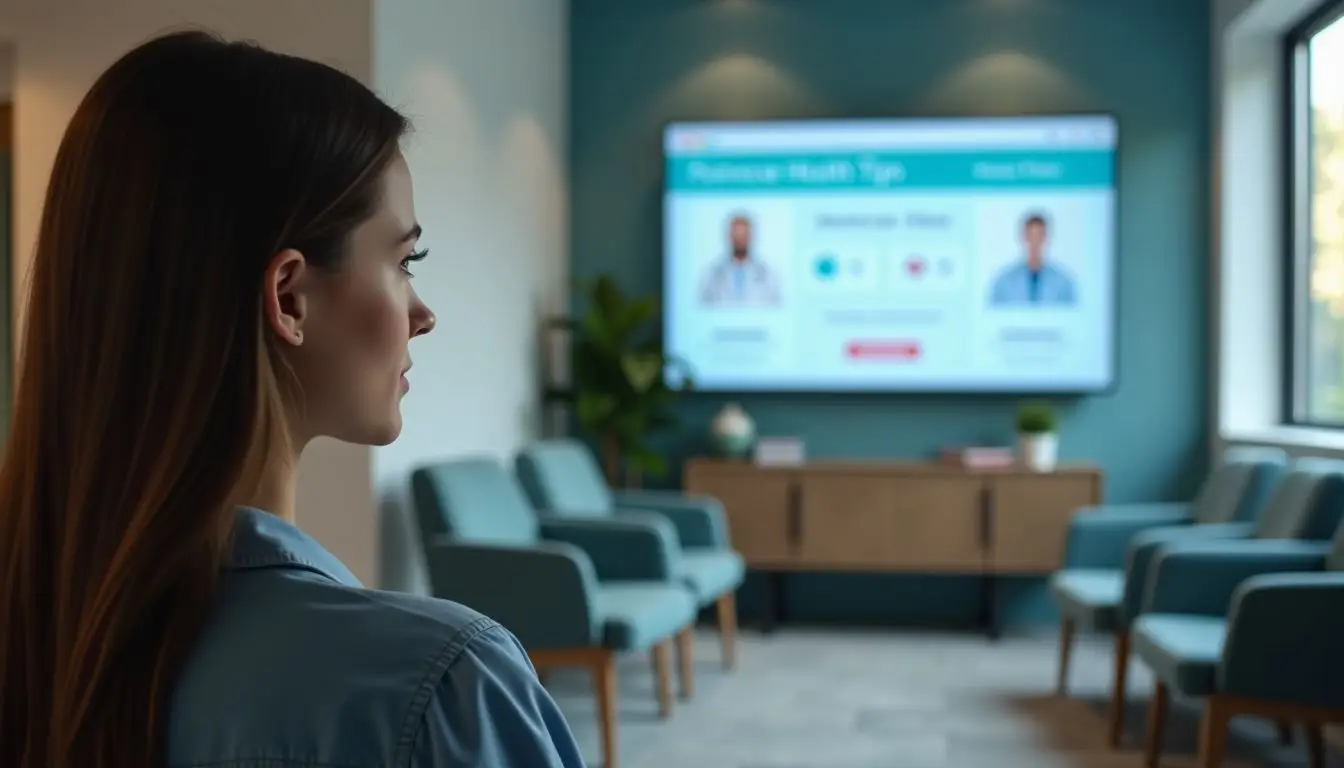
Digital signage can make waiting more pleasant for patients. It keeps them informed and engaged during their visit. This helps to ease stress and worries about wait times. Patients can feel relaxed as they see useful information on the screens.
Discover how this technology changes the patient experience for the better!
Decreased wait time
Digital signs can help reduce perceived wait times in medical offices. Patients feel less restless when they see real-time information on screens. These displays keep patients informed about their turn and the process ahead.
They offer updates on delays and other important news.
Understanding wait times lowers anxiety for many patients. Clear communication through healthcare digital signage helps them know what to expect. This can ease stress, making visits more pleasant overall.
With better queue management, medical offices create a smoother experience for everyone waiting in line.
Enhancing queue management
Queue management improves with digital signs. Patients can see their place in line on screens. This reduces the unknown and lowers stress levels. People feel more at ease knowing how much time they have left.
Informative displays keep patients engaged while they wait. Real-time updates about wait times help manage expectations, too. Staff can adjust the flow of patients based on what the signs show.
Many healthcare offices report better patient experiences thanks to these systems.
Providing multi-lingual support
Multi-lingual support in medical offices helps patients feel more comfortable. Digital signs show information in different languages. This feature is especially helpful in diverse communities.
It ensures that everyone understands what to expect.
Providing clear updates reduces stress and improves the patient experience. Patients can read important details about their wait times or procedures without confusion. These digital displays create a welcoming environment for all visitors, making healthcare less stressful for non-English speakers.
Mobile device integration
Mobile device integration helps patients stay informed. Patients can use their smartphones to check wait times or receive updates about their appointments. This keeps them engaged and lowers their stress levels.
Healthcare digital displays can connect with mobile apps too. Patients get real-time information right on their devices. They feel more in control, which reduces anxiety while waiting in medical offices.
These systems improve patient communication and enhance overall experience during the visit.
Digital Signage in Emergency Rooms
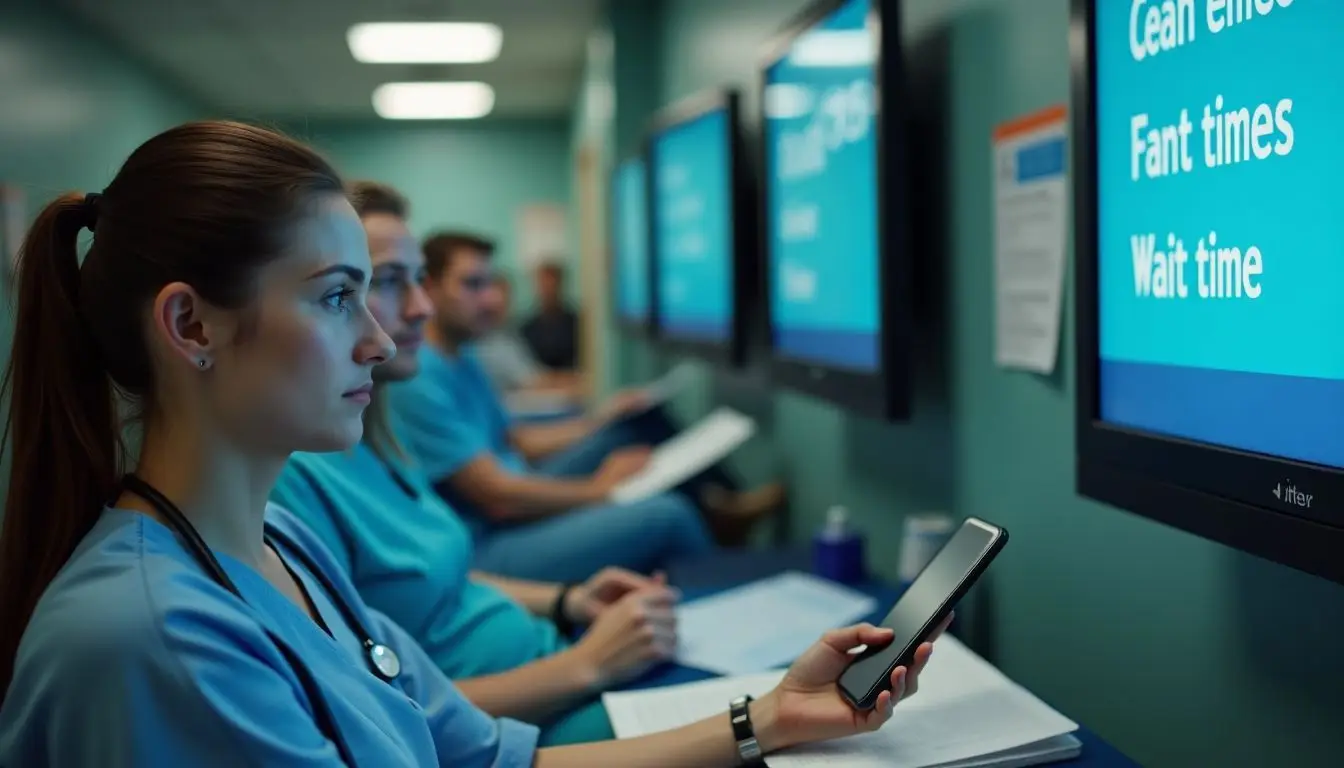
Digital signs in emergency rooms help reduce wait times. They also ease patient anxiety by providing quick updates and important information.
Reducing wait time
Digital signage helps cut down wait time in medical offices. Patients often feel anxious when they are in waiting rooms. Real-time information on screens can ease this stress. Signs show updates about their turn, which reduces uncertainty.
In emergency departments, quick updates are key. Patients want to know how long they might wait for care. Digital displays provide timely information that can calm nerves. First-hand experience shows that patients who see real-time updates report feeling less anxious while waiting for help.
Decreasing anxiety
Waiting in a medical office can cause stress for many patients. Digital signs help decrease anxiety by keeping people informed and engaged. These signs share real-time information about wait times and upcoming procedures.
Patients feel more at ease when they know what to expect.
Healthcare digital displays also show calming visuals or educational content. This engages patients and distracts them from their worries. First-hand experience shows that having access to clear information reduces patient stress levels.
Overall, reducing anxiety is key in improving the patient experience in medical offices.
Delivering timely information
Digital signage can share important updates quickly. Patients in medical offices often feel anxious due to uncertainty. These signs provide real-time information about wait times and the status of appointments.
Timely messages can reduce stress by keeping patients informed about what to expect.
For example, emergency rooms use digital displays to give clear updates on patient flow and estimated wait times. This helps people understand their situation better. By using healthcare technology like digital signage, offices improve patient engagement solutions and enhance the overall experience for everyone in the waiting room.
Implementing Digital Signage in Medical Offices
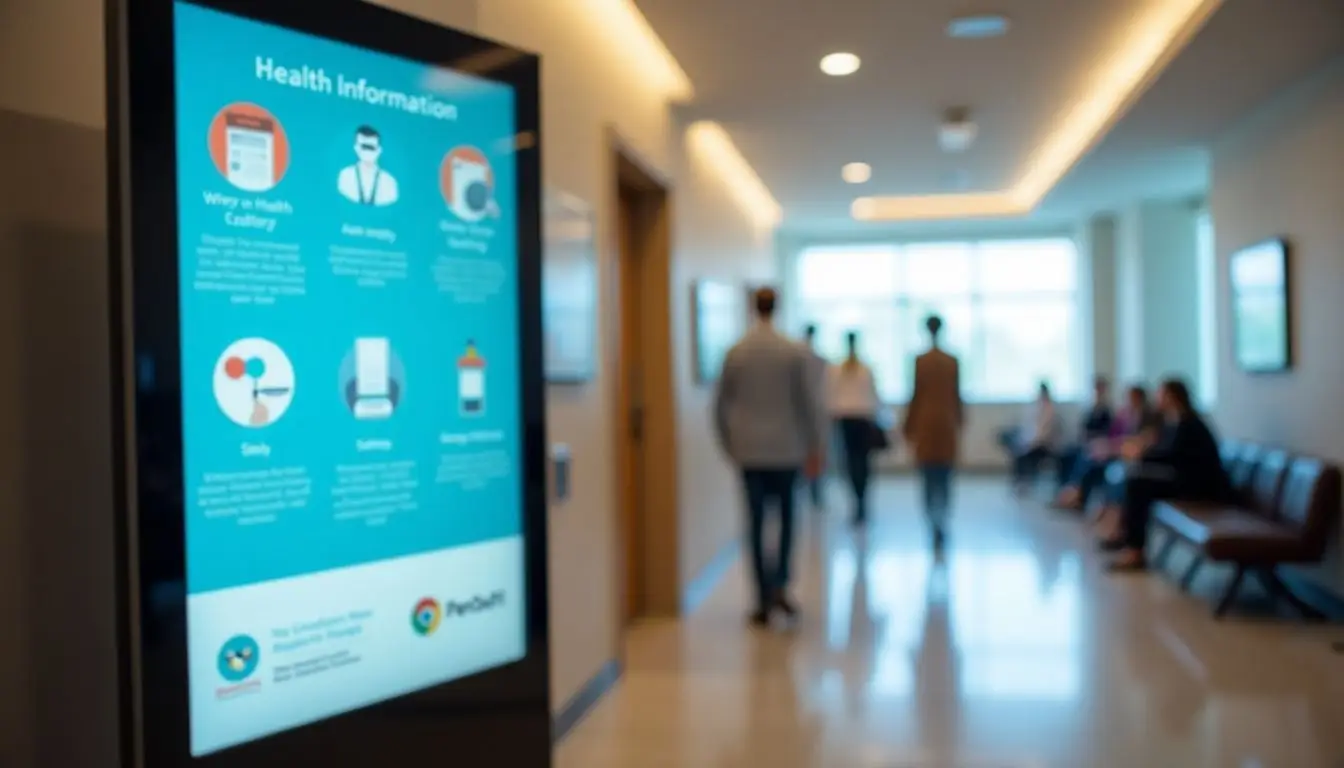
Choosing the right spots for digital signs can make a big difference. Good planning is key to success. You must think about what content your patients need to see. Train staff so they know how to use it well.
Check how things are going and fix any issues that arise. Want to learn more?
Assessing needs
Assessing needs is the first step in adding digital signs to medical offices. Staff should gather input from patients and workers. This helps identify what information is most useful during wait times.
Also, they can learn about common concerns that cause anxiety.
First-hand experience shows that many patients feel anxious while waiting for care. Digital signage can help reduce this stress by providing timely information. Plans should include updating content regularly to keep it fresh and relevant.
Using healthcare digital displays allows for effective patient communication systems.
Choosing the right locations
Choosing the right locations for digital signs is key. Place them where patients can easily see them. Good spots include waiting rooms and hallways. Signs should catch attention without blocking pathways or creating congestion.
First-hand experience shows that putting signs near check-in areas helps guide patients quickly. Locations should also match high-traffic zones, like restrooms and waiting areas. This way, healthcare signage keeps everyone informed while they wait.
Effective placement reduces perceived wait time and eases anxiety in medical offices.
Planning a content strategy
Planning a content strategy is key for using digital signs in medical offices. Patient experience can improve with clear and helpful information. Start by figuring out what your patients want to see.
Focus on educational content that fits your facility’s values.
Creating a mix of patient education, health tips, and real-time updates keeps people engaged. Use easy-to-read language and visuals to share timely information. Adding multi-lingual support ensures all patients understand the messages.
This approach helps reduce wait-time anxiety while making the waiting room feel more welcoming.
Training staff
Training staff is vital for using digital signs well. They need to know how the system works. Staff should learn to update information quickly. Real-time information helps reduce stress and waiting time for patients.
First-hand experience shows that trained staff can help improve patient experience. They guide patients on what to look for on the screens. This makes it easier for everyone in the office, including those who speak different languages.
Good training leads to better service and happier patients in medical offices.
Measuring success and tackling challenges
Measuring success with digital signage needs clear goals. Track how long people spend in the waiting room. Use surveys to gather patient feedback about their experience. This can help identify ways to improve.
Tackling challenges is important too. Staff may need training on using new technology. Some patients might struggle with screens or language barriers. Offering multi-lingual support can make a difference.
Address these issues quickly for better patient experience improvement and reduced anxiety in medical offices.
FAQs
1. How do digital signs help reduce wait-time anxiety in medical offices?
Digital signs, part of waiting room technology, display real-time information to patients. This helps manage perceived wait time and can lessen anxiety.
2. What are the benefits of using information screens in a medical office?
Information screens or digital signs provide updated queue status and other relevant details. They serve as effective anxiety reduction strategies by keeping patients informed.
3. Can queuing systems contribute to stress reduction in medical offices?
Yes, queuing systems that use digital signs give clear updates about wait times. This transparency can lead to significant stress reduction for waiting patients.
4. Are there other ways that digital signs can be used in a medical office setting?
Aside from managing perceived wait times and reducing anxiety, these tools also offer valuable health tips or news while patients wait, making their visit more informative and productive.

